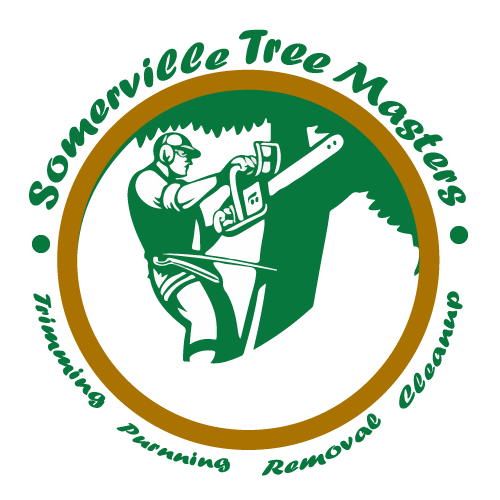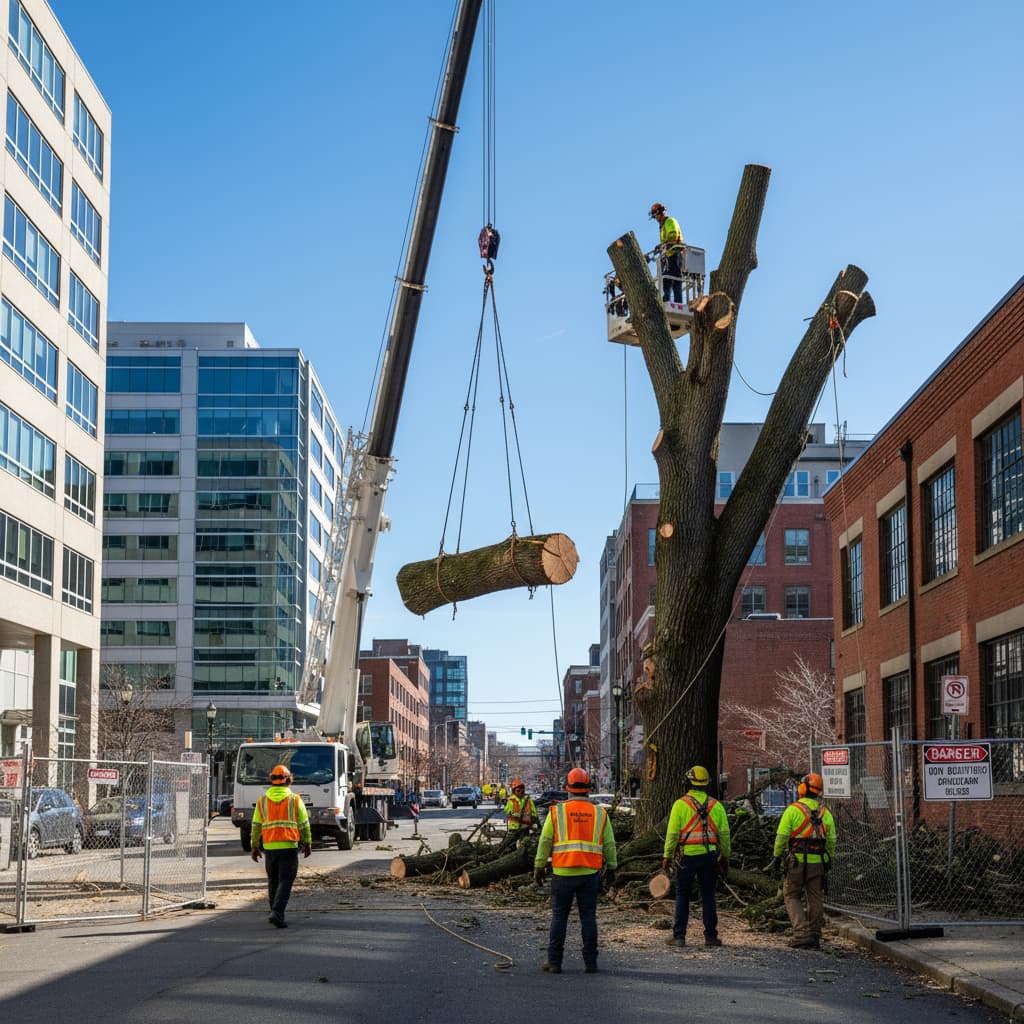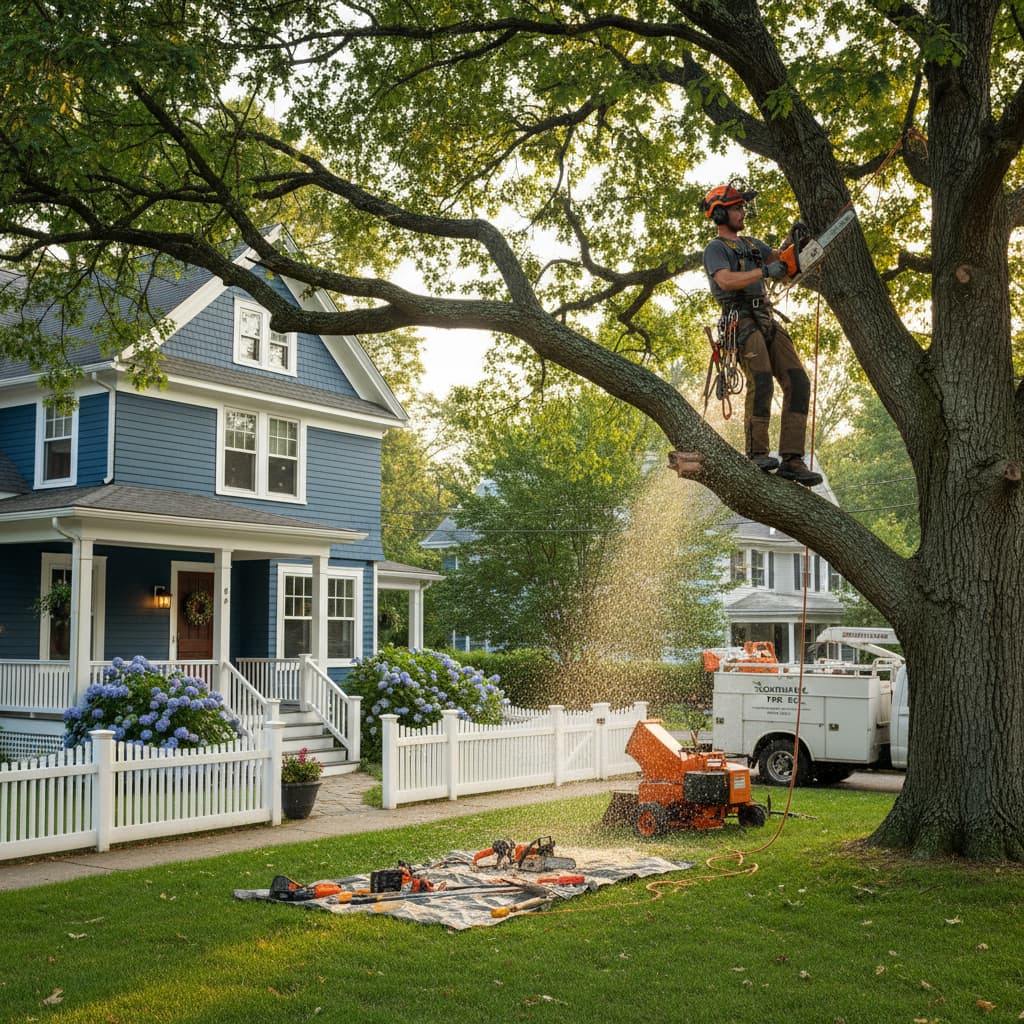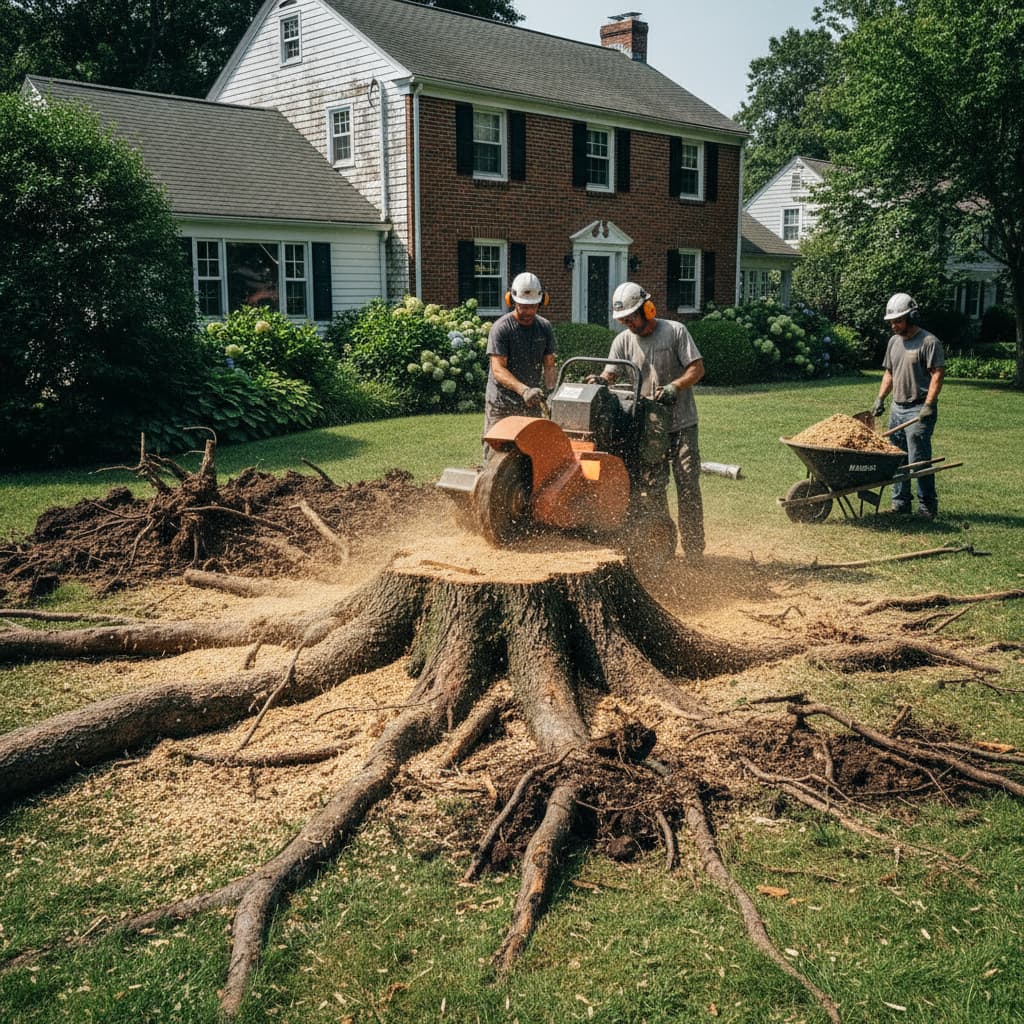Tree Care: Disease Treatment Options in Somerville
Tree Disease Treatment Somerville
Tree diseases pose a significant threat to Somerville’s urban canopy, from the mature oaks lining the streets around Davis Square to the diverse species found throughout neighborhoods like Ten Hills and Assembly Row. Understanding the various tree disease treatment options available can help homeowners protect their valuable landscape investments and maintain the health of their trees. Early detection and proper treatment are crucial for preventing the spread of diseases that could devastate entire neighborhoods.
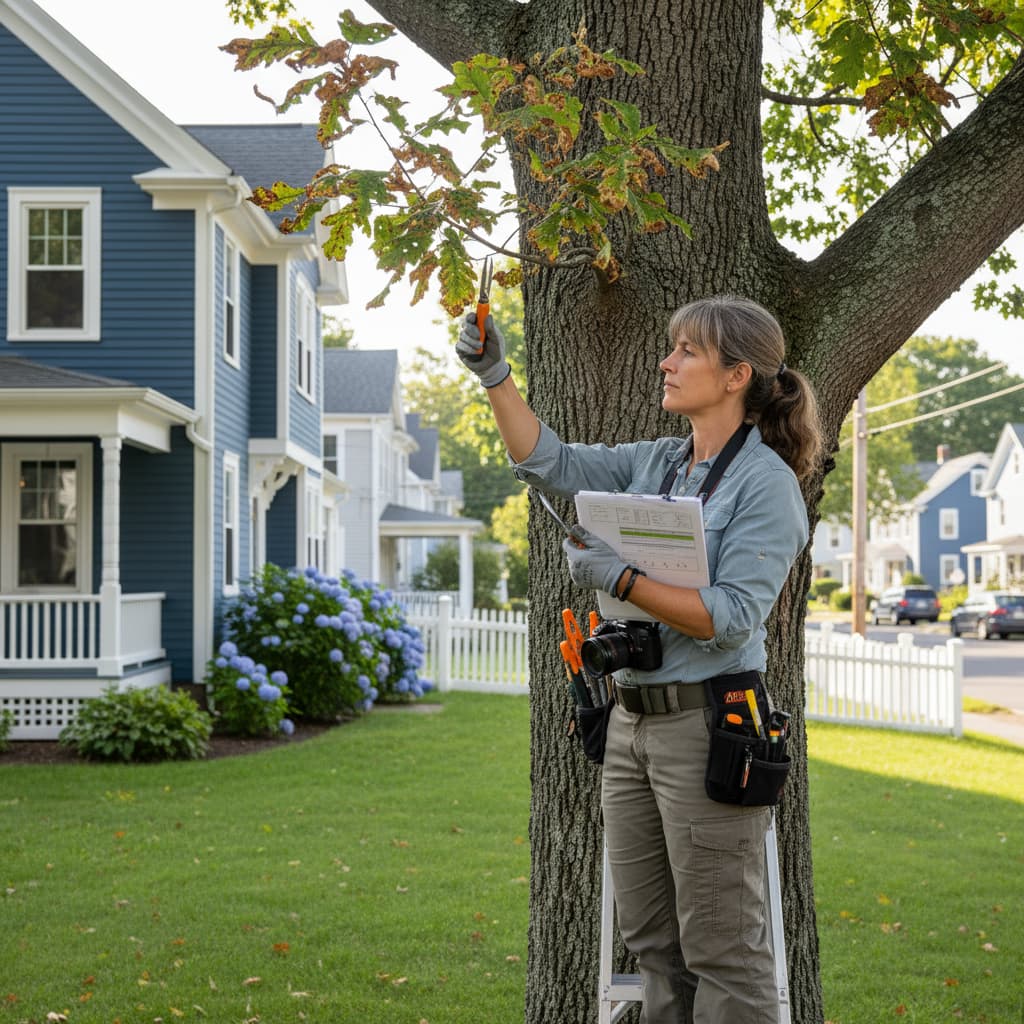
Common Tree Diseases in Somerville
Oak Anthracnose
Oak anthracnose is one of the most prevalent fungal diseases affecting trees throughout Massachusetts, particularly impacting the white oak species common in Somerville’s residential areas. This disease typically manifests as brown blotches along leaf veins, water-soaked spots, and premature leaf drop. The cool, wet springs characteristic of New England create ideal conditions for anthracnose development, especially in the shaded lower canopies of trees near Union Square and Winter Hill.
Beech Leaf Disease
A relatively new threat that has rapidly spread across Massachusetts since 2020, beech leaf disease affects the American beech trees found in many Somerville neighborhoods. Caused by microscopic nematodes, this disease creates distinctive dark bands or stripes on leaves, eventually leading to canopy thinning and tree death. The disease has been confirmed in over 80 Massachusetts communities, making it a growing concern for property owners in areas like East Somerville and Prospect Hill.
Oak Wilt
Though less common in Massachusetts than in the Midwest, oak wilt remains a serious concern for homeowners with valuable oak trees. This devastating fungal disease spreads through root grafts and insect vectors, causing rapid wilting and death, particularly in red oak species. Trees affected by oak wilt can die within weeks, making early detection and prevention critical.
Preventive Treatment Strategies
Fungicide Applications
Professional fungicide treatments represent the most effective approach to tree disease treatment for many common diseases. These applications must be timed precisely, typically beginning in early spring before bud break, when trees are most susceptible to infection. Certified arborists can determine the appropriate fungicide type and application schedule based on the specific disease threats and tree species present on your property.
Systemic Injections
For high-value trees or severe disease pressure, systemic injections deliver fungicides directly into the tree’s vascular system. This method provides longer-lasting protection and reduces environmental impact compared to foliar sprays. Systemic treatments are particularly effective for managing diseases like oak wilt in valuable specimen trees throughout Somerville’s historic neighborhoods.
Soil Improvement Programs
Healthy soil promotes strong tree immune systems that can better resist disease infections. Professional soil testing and amendment programs address nutrient deficiencies, compaction issues, and pH imbalances that weaken trees. This approach is especially beneficial in urban environments like those found around Magoun Square and Ball Square, where soil conditions may be compromised by construction and development.
Cultural Management Practices
Proper Pruning Techniques
Strategic pruning plays a vital role in disease prevention and management. Removing dead, diseased, or damaged branches eliminates infection sources and improves air circulation throughout the canopy. However, timing is critical – oak trees should never be pruned during the growing season when disease-spreading insects are active, particularly from April through July.
Sanitation Protocols
Thorough cleanup of infected plant material prevents disease cycles from continuing. This includes removing fallen leaves, infected branches, and debris that can harbor pathogens through the winter months. Property owners in densely populated areas like Teele Square and Spring Hill should pay particular attention to sanitation practices, as diseases can easily spread between closely spaced trees.
Water Management
Proper irrigation practices support tree health while avoiding conditions that promote disease development. Deep, infrequent watering encourages strong root development, while avoiding overhead watering reduces leaf wetness that many fungal diseases require for infection. This is particularly important during Somerville’s humid summers.
Treatment Timing and Seasonal Considerations
Early Spring Applications
Most preventive tree disease treatment programs begin in early spring before bud break. This timing allows fungicides to establish protection before new, susceptible growth emerges. Spring treatments are essential for managing anthracnose and other leaf spot diseases that take advantage of cool, wet conditions typical in Massachusetts.
Summer Monitoring
Summer months require vigilant monitoring for disease symptoms and stress factors that can predispose trees to infection. High temperatures and drought stress are common in urban areas like Assembly Row, which can weaken tree defenses, making professional assessment and intervention crucial during challenging weather periods.
Fall Preparation
Fall treatments focus on strengthening trees for winter survival and preventing overwintering of disease pathogens. This includes fertilization programs, deep watering before ground freeze, and thorough removal of infected plant debris that could harbor pathogens until spring.
Advanced Treatment Technologies
Biological Control Options
Emerging biological treatments use beneficial microorganisms to suppress disease pathogens and enhance tree immune responses. These environmentally friendly options are increasingly popular among environmentally conscious homeowners in Somerville’s diverse neighborhoods, particularly those near sensitive areas like the Mystic River corridor.
Growth Regulators
Plant growth regulators can help trees manage stress and redirect energy toward disease resistance rather than excessive growth. These treatments are particularly beneficial for trees in challenging urban environments where space constraints and environmental stressors are common concerns.
When to Consider Tree Removal
Despite best efforts, some diseased trees may require removal to protect surrounding healthy trees and ensure property safety. Trees with extensive canopy loss, structural damage from disease, or infections with highly contagious pathogens like oak wilt may need professional removal. Early consultation with certified arborists can help determine whether treatment or removal represents the best long-term solution.
Integrated Disease Management Programs
The most effective approach to tree disease treatment combines multiple strategies tailored to specific property conditions and disease pressures. Professional tree care companies develop comprehensive programs that include regular monitoring, preventive treatments, cultural practices, and emergency response protocols. These integrated approaches provide the best protection for valuable trees while maintaining cost-effectiveness.
Successful tree disease treatment requires expertise, proper timing, and often specialized equipment that most homeowners don’t possess. Working with certified arborists ensures that diseases are correctly identified, appropriate treatments are selected, and applications are performed safely and effectively.
Professional Tree Disease Treatment from Somerville Tree Masters
At Somerville Tree Masters, we understand the unique disease pressures facing trees in our urban environment. Our certified arborists have extensive experience diagnosing and treating the full range of diseases affecting trees from Powder House Square to Ward Two. We develop customized treatment programs that address specific disease threats while supporting overall tree health, helping preserve Somerville’s beautiful urban forest for future generations.
